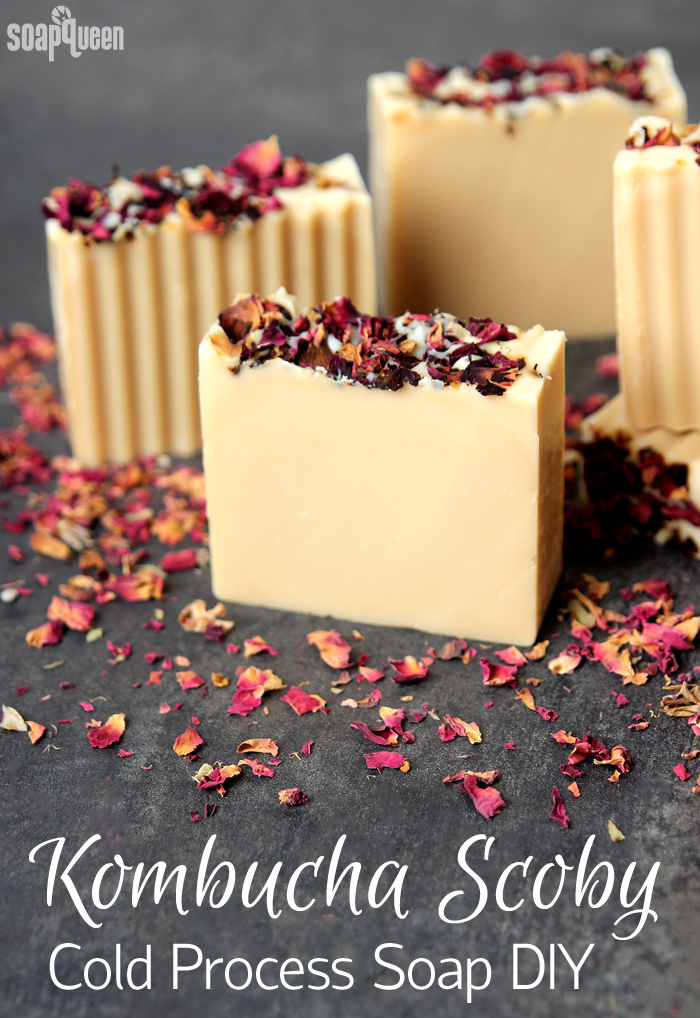
I’m fascinated by how diet and exercise affects our lives, sleep patterns, energy levels and basically, everything. Because of this, I’m always game to try the newest health food craze. Choffy? Sign me up. Bulletproof coffee? Yep. Probiotics? On it. Recently, I have been on a fermented food kick. This includes eating lots of sauerkraut, kimchi and making my own kombucha. If you’re unfamiliar with kombucha, it is fermented and sweetened tea (usually black tea or green tea). It’s a bit of a polarizing beverage as it has a strong vinegar taste. Personally, I love it as do the kiddos. =)
To create kombucha, a “Symbiotic Colony Of Bacteria and Yeast,” also known as a SCOBY, is placed in the tea to ferment the beverage. As the tea ferments, the SCOBY separates and duplicates. The science is pretty amazing! If you’ve ever made kombucha before, you know how quickly your SCOBY duplicates. Soon, you’ll have more kombucha and SCOBY than you know what to do with. After giving away as much SCOBY to friends and family as I could, I thought (as any soapmaker does), “I need to make soap with this!”
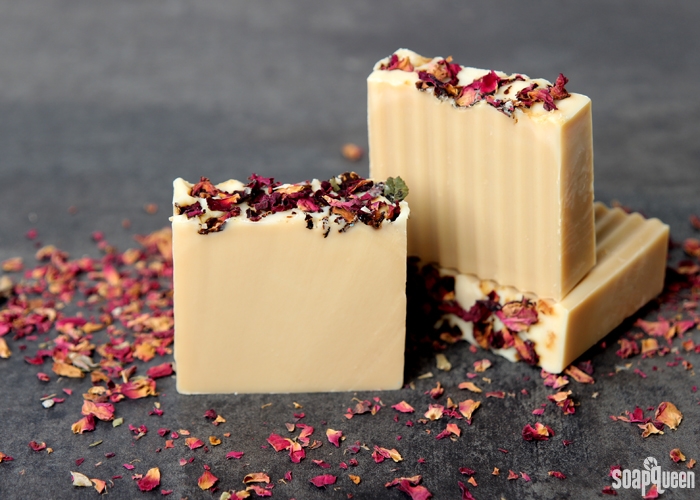
Using kombucha and SCOBY in cold process soap is the same as using other alternative liquids and additives such as purees (click here to learn more about purees in soap). Essentially, the kombucha and SCOBY add sugar to the soap batter, which increases the temperature. I was concerned that replacing 100% of the distilled water in this recipe with kombucha and adding SCOBY would be too much extra sugar. Instead, I chose to puree the SCOBY with a few ounces of kombucha and add the puree at trace.
If you’re curious about how I calculated the water amounts in this recipe with the SCOBY and kombucha, here is how I broke it down:
- The full amount of water in this recipe is 18.15 ounces.
- First, I calculated a 10% water discount to help it unmold faster. This gave me 16.3 ounces of water (18.15 x 0.9= 16.3).
- I’m adding 5 ounces of SCOBY and 3.3 ounces of kombucha at trace. I estimated the SCOBY is about 50% water, which means I’m adding 2.5 ounces of water via the SCOBY.
- The total amount of liquid added at trace is 5.8 ounces; 2.5 ounces of liquid in the SCOBY and 3.3 ounces of kombucha. (3.3 + 2.5 = 5.8).
- To compensate for the added liquid, I subtracted 5.8 ounces from 16.3 ounces to get 10.5 ounces.
To go from 18.15 ounces of water to 10.5 ounces of water looks like a huge water discount. But, keep in mind you are adding 3.3 ounces of kombucha at trace and 5 ounces of SCOBY at trace, which has a large amount of water (approx. 2.5 ounces). Technically, you can safely mix lye and water at a 1:2 ratio. To read more about water discounting your soap, click here.
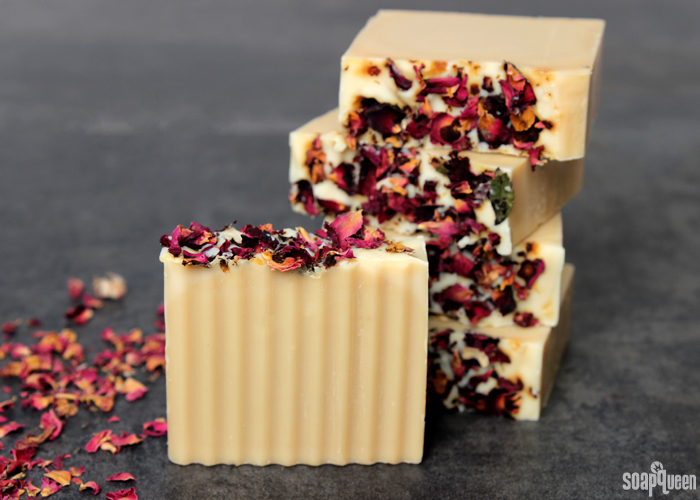
I did experience some heat-related issues in this batch. You can read about them at the bottom of this post. Keep in mind the sugar and water content in my kombucha might be a little bit different than yours because each brew will be unique. Because kombucha naturally contains vinegar, I was curious how this would affect the pH of my bars. I tested the pH of these bars and it was 8, which is on the lower side of normal for CP soap. This may vary depending on how “strong” your kombucha is. Click here to read more about the pH of cold process soap.
What You’ll Need:
5 Pound Mold with Sliding Bottom
Silicone Liner for 5 lb Wood Mold
8.3 oz. Coconut Oil (15%)
44 oz. Olive Oil (80%)
2.8 oz. Cocoa Butter (5%)
7.4 oz. Sodium Hydroxide Lye
10.5 oz. Distilled Water
3.3 oz. Kombucha Tea
5 oz. Kombucha SCOBY, chopped
3.5 oz. Egyptian Geranium Essential Oil
Rose Petals

Click here to add everything you need for this project to your Bramble Berry shopping cart!
If you’ve never made Cold Process soap before, stop here! I highly recommend checking out our FREE four part SoapQueen.tv series on Cold Process Soapmaking, especially the episode on lye safety. And if you’d rather do some reading, Bramble Berry carries a wide range of books on the topic, including my newest book, Pure Soapmaking. You can also check out the digital downloads for that instant gratification factor.
SAFETY FIRST: Suit up for safe handling practices! That means goggles, gloves and long sleeves. Make sure kids, pets, and other distractions and tripping hazards are out of the house or don’t have access to your soaping space. Always soap in a well-ventilated area.
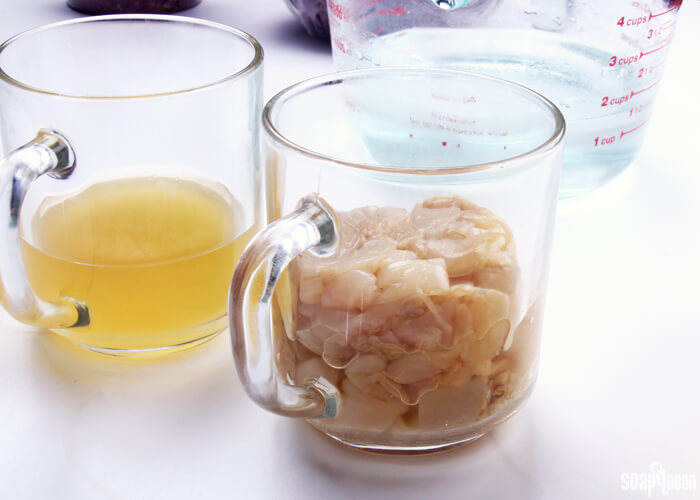 KOMBUCHA + SCOBY PREP: In a small container, measure out 3.3 oz. of kombucha tea. I used room temperature tea. Then, chop up the SCOBY into small pieces and measure 5 oz. Using a blender or food processor (I used a Magic Bullet), blend the SCOBY and kombucha together. You want the mixture to be extremely smooth.
KOMBUCHA + SCOBY PREP: In a small container, measure out 3.3 oz. of kombucha tea. I used room temperature tea. Then, chop up the SCOBY into small pieces and measure 5 oz. Using a blender or food processor (I used a Magic Bullet), blend the SCOBY and kombucha together. You want the mixture to be extremely smooth.
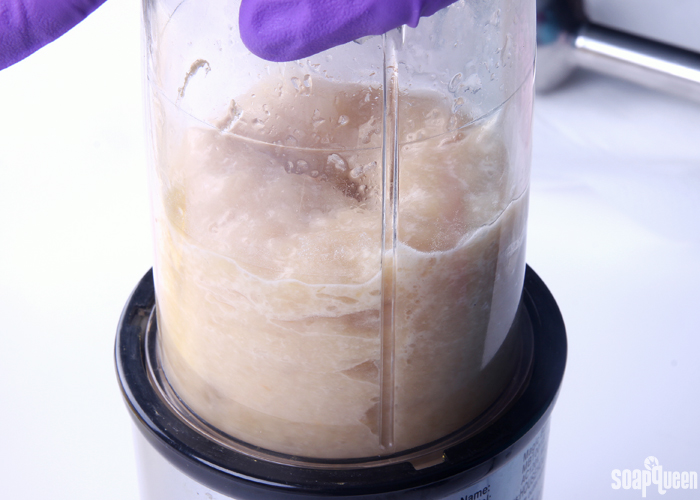
NOTE: Even after plenty of blending, my mixture was not quite as smooth as I wanted it to be. To help blend it further, I added about 2 ounces of my measured and mixed soapmaking oils to help it blend better. If you find the SCOBY blend is not completely smooth, complete steps one and two below. Then, add a small amount of the measured soaping oils to your SCOBY puree and continue to blend. You could also use more kombucha or distilled water if you prefer, just keep in mind you may want to adjust your water amounts if you do so.
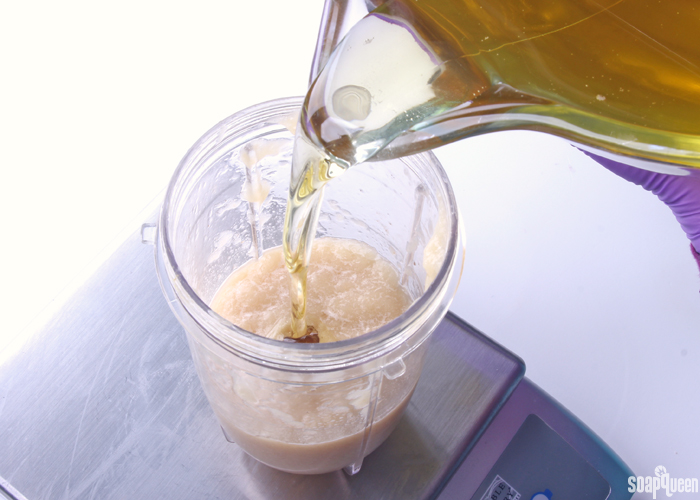
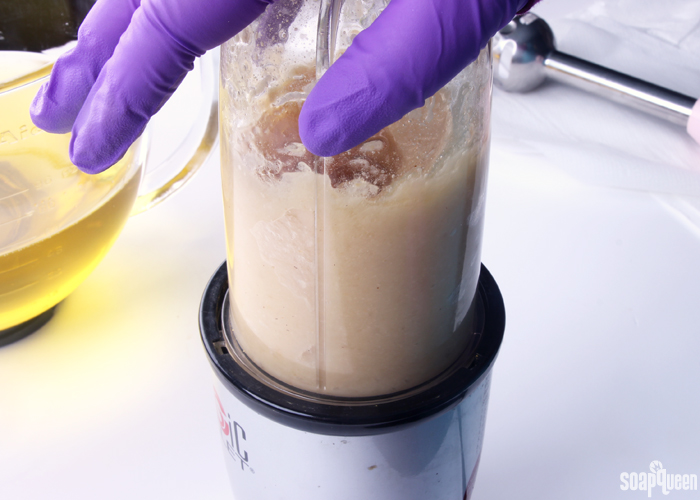 ONE: Slowly and carefully add the lye to the water and gently stir until the lye has fully dissolved and the liquid is clear. Set aside to cool.
ONE: Slowly and carefully add the lye to the water and gently stir until the lye has fully dissolved and the liquid is clear. Set aside to cool.
TWO: Melt and combine the coconut oil, cocoa butter and olive oil. Once the lye water and the oils have cooled to 110-120F degrees or below (and are ideally within 10 degrees of each other), add the lye water to the oils and stick blend until thin trace. If you’d like a harder bar of soap that releases faster from the mold, you can add sodium lactate to the cooled lye water. Use 1 teaspoon of sodium lactate per pound of oils in the recipe. For this recipe, you’d add about 3.5 teaspoons sodium lactate. Because this recipe contains a large amount of olive oil, you may find it takes a little bit longer to trace.
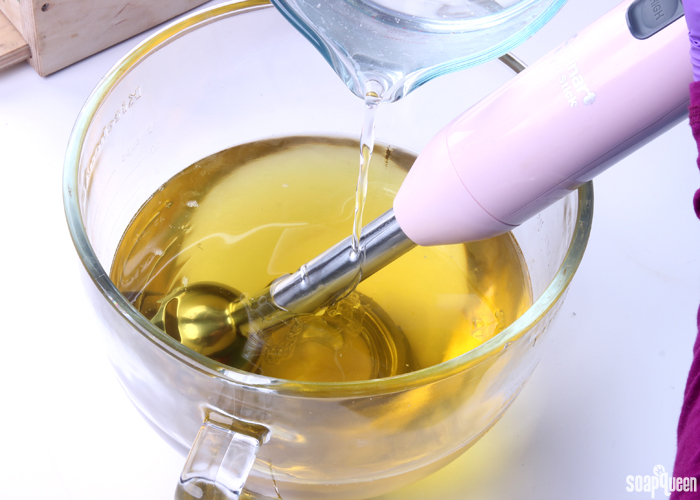
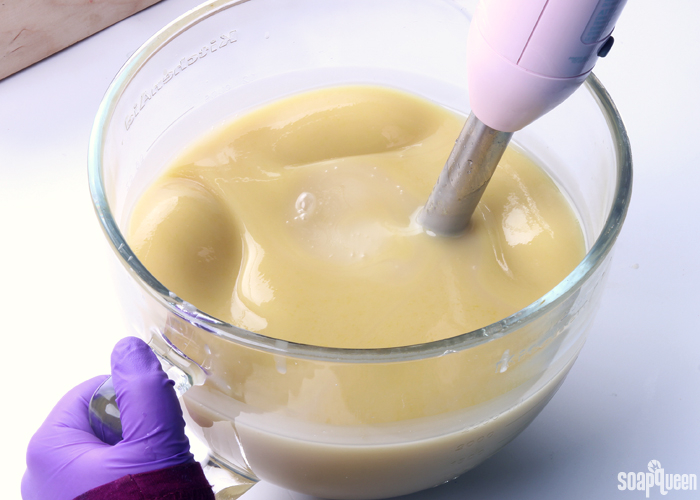 THREE: Once the soap has reached a thin trace, pour the SCOBY mixture into the batter. Use the stick blender to mix in the SCOBY thoroughly.
THREE: Once the soap has reached a thin trace, pour the SCOBY mixture into the batter. Use the stick blender to mix in the SCOBY thoroughly.
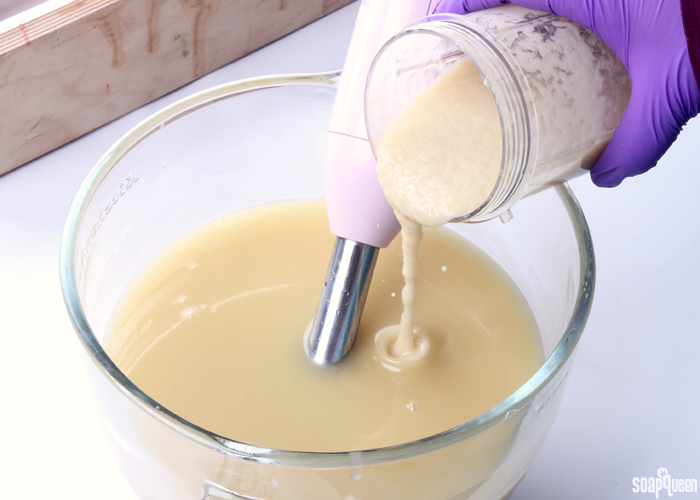 FOUR: Right away, you’ll notice a color change! This happens because of the sugar content in the SCOBY and kombucha scorching as it comes in contact with the lye. Don’t worry, this is normal.
FOUR: Right away, you’ll notice a color change! This happens because of the sugar content in the SCOBY and kombucha scorching as it comes in contact with the lye. Don’t worry, this is normal.
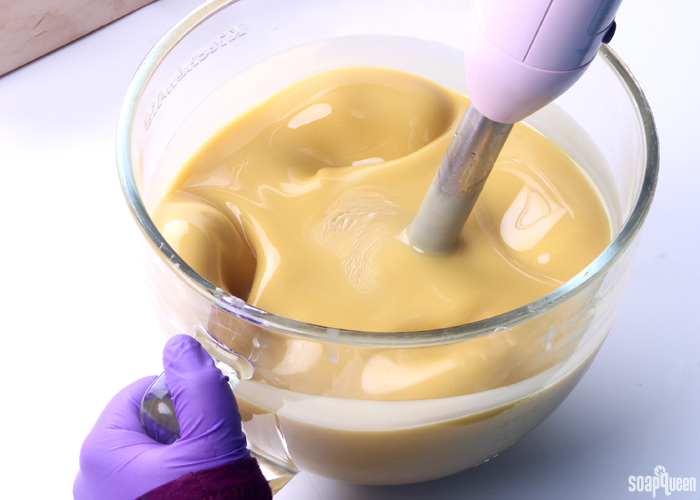 FIVE: Once you add the SCOBY mixture, the batter will start to thicken faster. Once you reach a medium trace, add the Egyptian geranium essential oil. Use the stick blender to thoroughly mix in.
FIVE: Once you add the SCOBY mixture, the batter will start to thicken faster. Once you reach a medium trace, add the Egyptian geranium essential oil. Use the stick blender to thoroughly mix in.
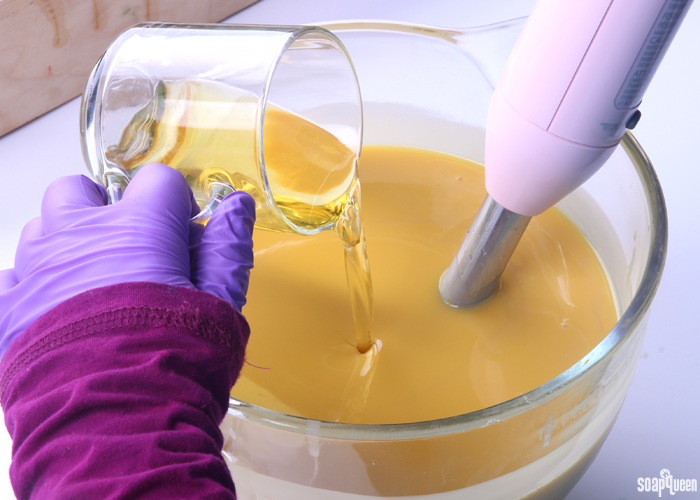
Out of curiosity, I checked the temperature of the soap batter. It was a nice and warm 134 ° F.
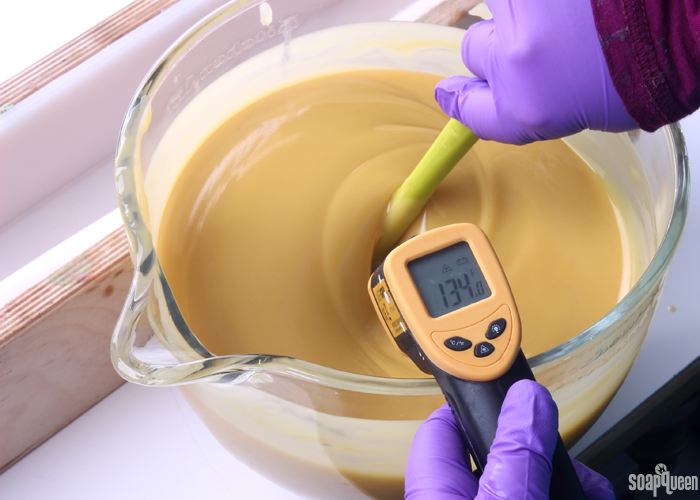
SIX: Pour the soap into the mold. Tap the mold firmly on the counter to help release any air bubbles.
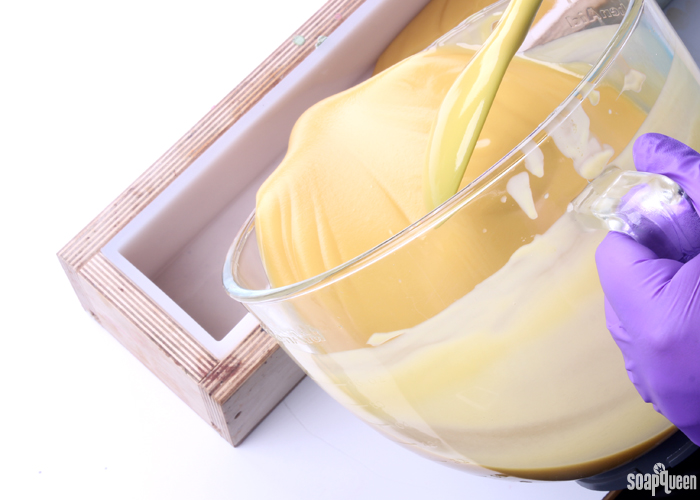 SEVEN: Use a spoon or spatula to spread the soap evenly within the mold. Cover the top with rose petals. To help them stick to the soap, gently press them into the soap with gloved hands. Spray the top with isopropyl alcohol to help reduce soda ash. I did not insulate or refrigerate this soap, but did experience some heat-related issues. Read more about them below. To help prevent them, place the soap in the fridge for 24 hours. Remove from the mold after 3-4 days and cut into bars. Allow the soap to cure for 4-6 weeks before use.
SEVEN: Use a spoon or spatula to spread the soap evenly within the mold. Cover the top with rose petals. To help them stick to the soap, gently press them into the soap with gloved hands. Spray the top with isopropyl alcohol to help reduce soda ash. I did not insulate or refrigerate this soap, but did experience some heat-related issues. Read more about them below. To help prevent them, place the soap in the fridge for 24 hours. Remove from the mold after 3-4 days and cut into bars. Allow the soap to cure for 4-6 weeks before use.
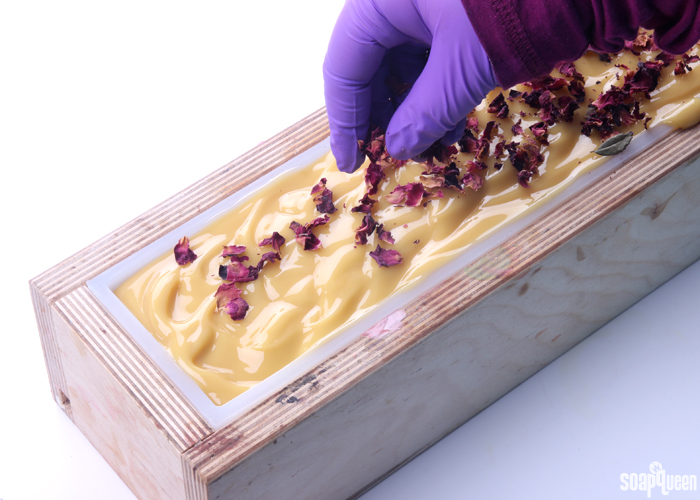
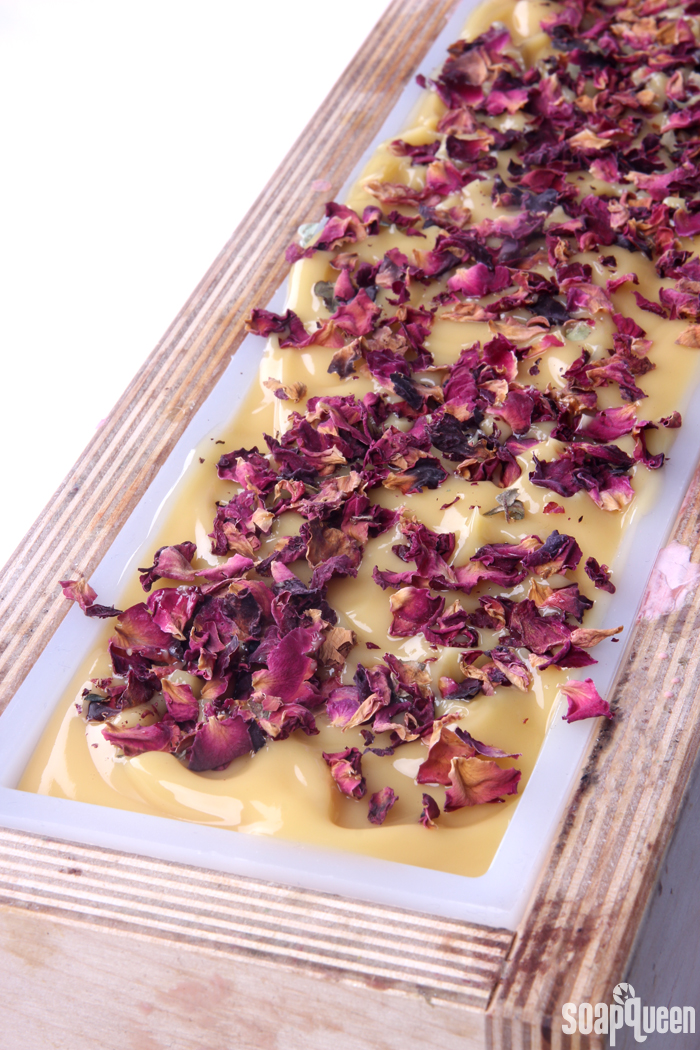
I did not cover, insulate or refrigerate the soap. I wanted to see how it behaved in a normal, room temperature space. I found it behaved relatively well with some minor issues. It did not overheat and volcano out of the mold, but it did show some heat-related problems. When I unmolded the soap, I immediately noticed that the sides had some “pockets” of moisture that looked like separation. I allowed the soap to sit outside of the mold for a few hours, and the moisture completely disappeared. I’m pretty sure the soap boiled in the mold and the moisture was basically condensation. This could be solved by soaping with lower temperatures. You can see what the sides looked like after drying below.
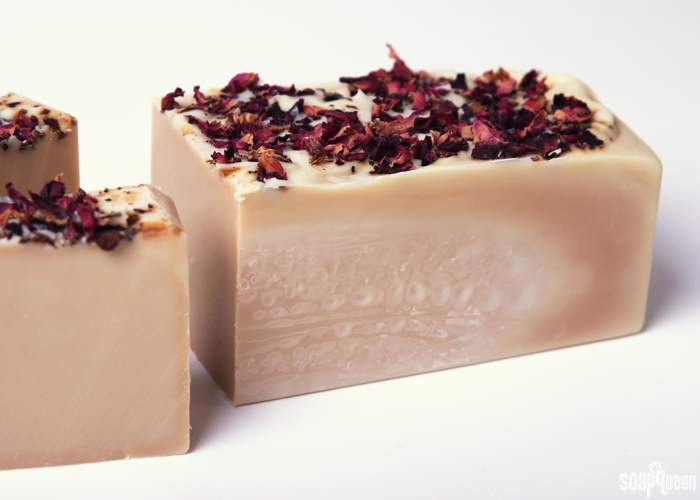 The sides of the soap showed evidence of it becoming quite warm!
The sides of the soap showed evidence of it becoming quite warm!
When I cut the loaf, I found there was a ring on the inside (see photo below). After cutting, this ring disappeared in about two days and the bars continued to lighten a little bit. Interesting right? I found this ring also occurred in the Buttermilk Bastille Baby Bars. Luckily, both rings faded with time.
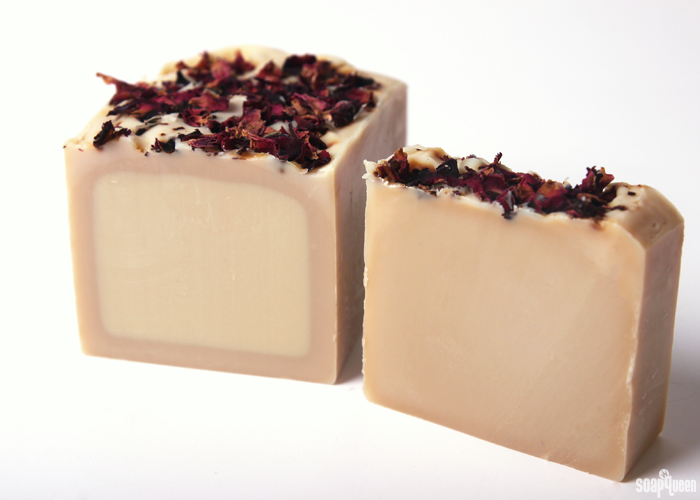 The soap on the left is freshly cut, while the soap on the right has been cut for a few days. Notice the ring on the inside has faded dramatically.
The soap on the left is freshly cut, while the soap on the right has been cut for a few days. Notice the ring on the inside has faded dramatically.
Even with these issues, I think this was a really successful batch. Whatever moisture collected on the sides dried quickly, and the ring faded as well. The sugar from the kombucha and SCOBY boosts the lather. It’s hard to say how much of the kombucha and SCOBY properties remain after the saponification process. But, it’s great from a marketing standpoint. =) Have you ever made soap with kombucha, or SCOBY before? It was a fun experiment!
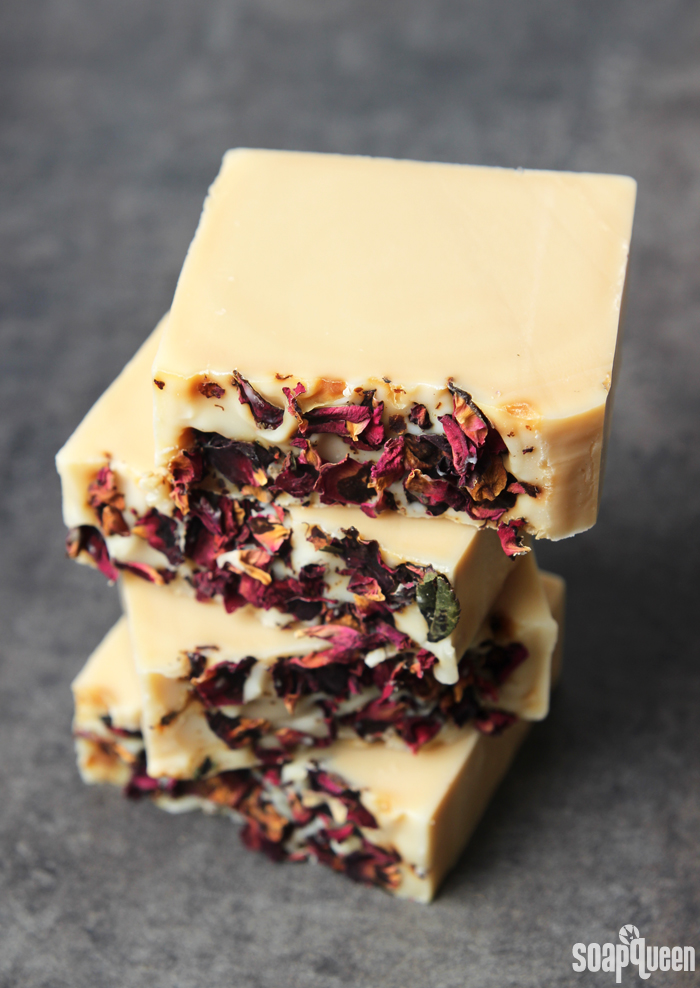
Click to View the Recipe
- 5 Pound Mold with Sliding Bottom
- Silicone Liner for 5 lb Wood Mold
- 8.3 oz. Coconut Oil
- 44 oz. Olive Oil
- 2.8 oz. Cocoa Butter
- 7.4 oz. Sodium Hydroxide Lye
- 10.5 oz. Distilled Water
- 3.3 oz. Kombucha Tea
- 5 oz. Kombucha Scoby, chopped
- 3.5 oz. Egyptian Geranium Essential Oil
- Rose Petals
- Slowly and carefully add the lye to the water and gently stir until the lye has fully dissolved and the liquid is clear. Set aside to cool.
- Melt and combine the coconut oil, cocoa butter and olive oil. Once the lye water and the oils have cooled to 110-120 degrees or below (and are ideally within 10 degrees of each other), add the lye water to the oils and stick blend until thin trace. If you’d like a harder bar of soap that releases faster from the mold, you can add sodium lactate to the cooled lye water. Use 1 teaspoon of sodium lactate per pound of oils in the recipe. For this recipe, you’d add about 3.5 teaspoons sodium lactate. Because this recipe contains a large amount of olive oil, you may find it takes a little bit longer to trace.
- Once the soap has reached a thin trace, pour the SCOBY mixture into the batter. Use the stick blender to mix in the SCOBY thoroughly.
- Right away, you’ll notice a color change! This is happening because of the sugar content in the scoby and kombucha scorching as it comes in contact with the lye. Don’t worry, this is normal.
- Once you add the SCOBY mixture, the batter will start to thicken faster. Once you reach a medium trace, add the Egyptian geranium essential oil. Use the stick blender to thoroughly mix in.
- Pour the soap into the mold. Tap the mold firmly on the counter to help release any air bubbles.
- Use a spoon or spatula to spread the soap evenly within the mold. Cover the top with rose petals. To help them stick to the soap, gently press them into the soap with gloved hands. Spray the top with isopropyl alcohol to help reduce soda ash. I did not insulate or refrigerate this soap, but did experience some heat related issues. Read more about them below. To help prevent them, place the soap in the fridge for 24 hours. Remove from the mold after 3-4 days and cut into bars. Allow the soap to cure for 4-6 weeks before use.
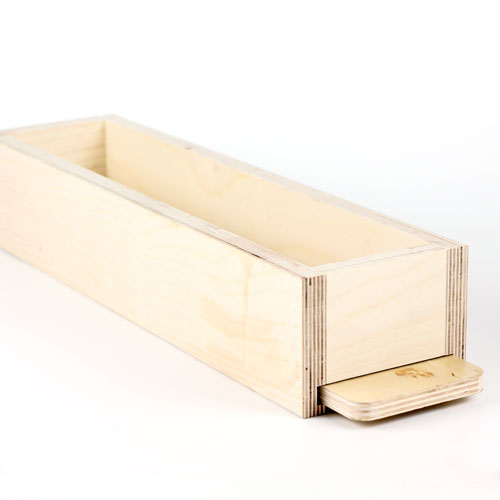
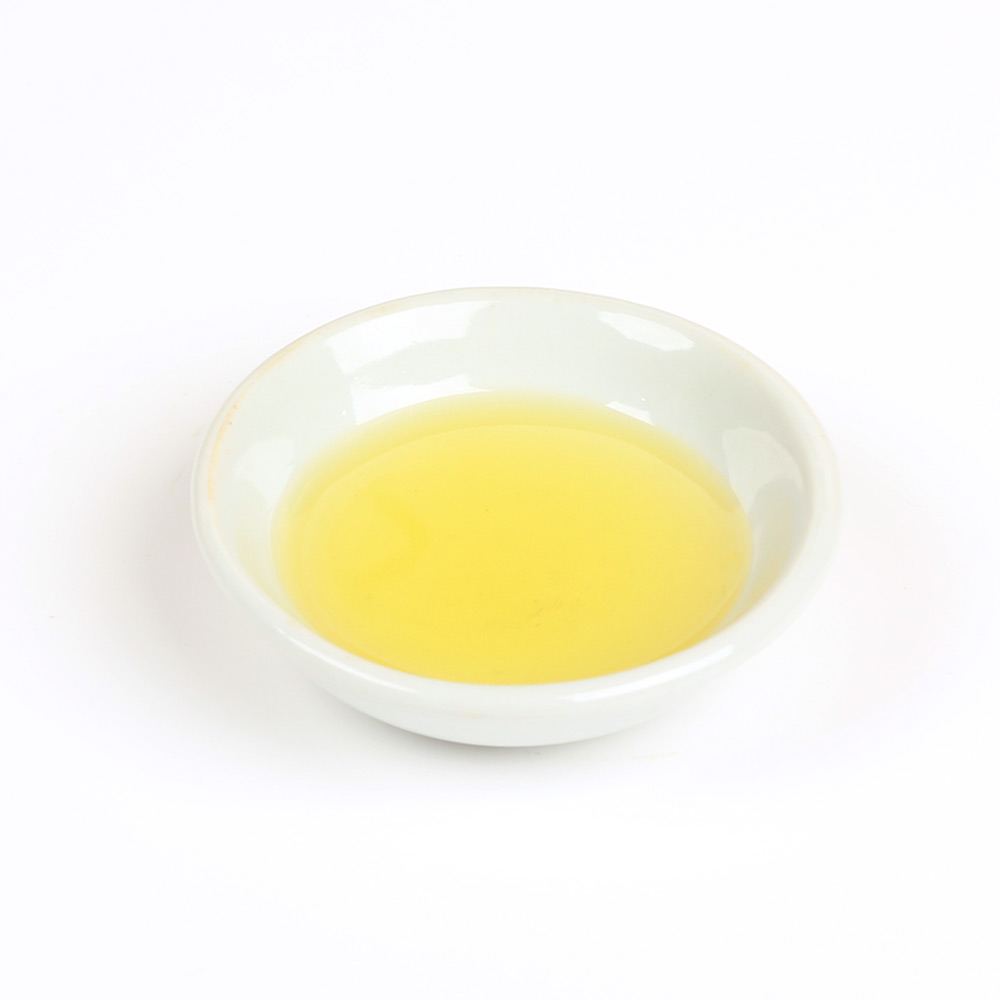
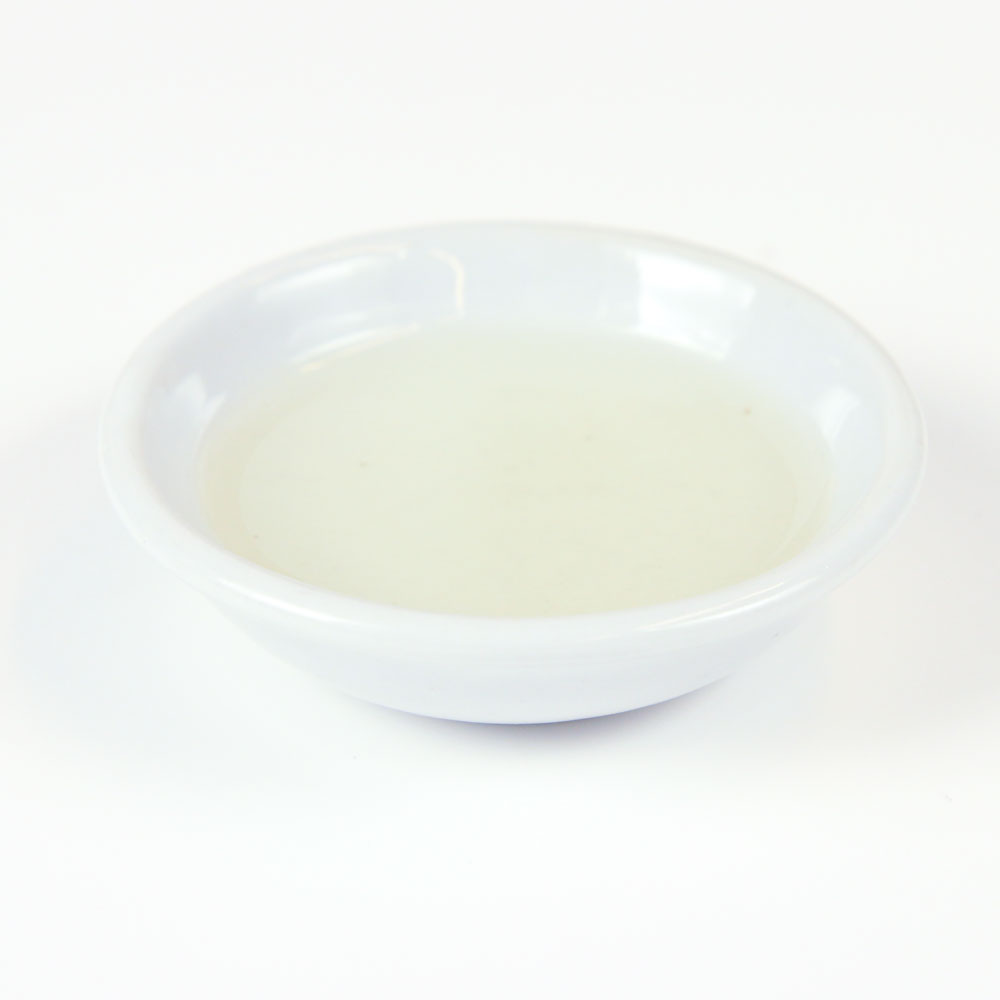
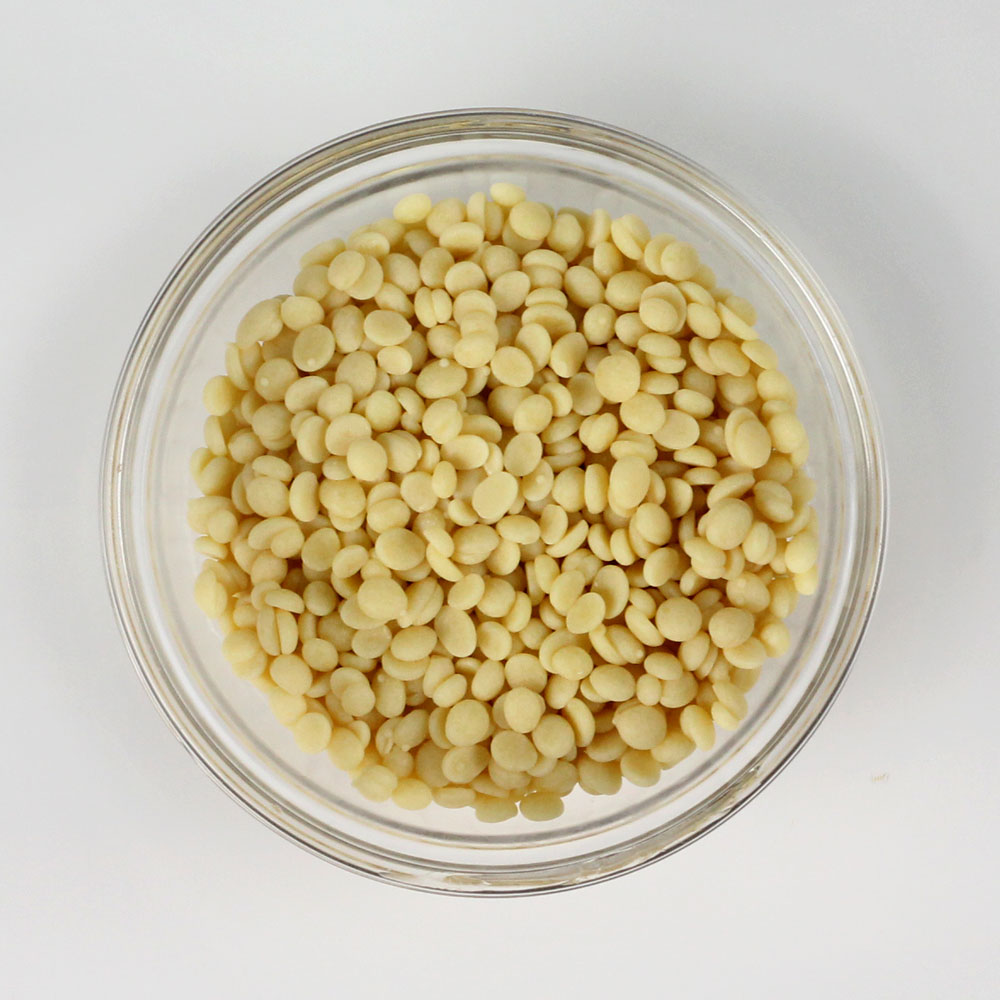
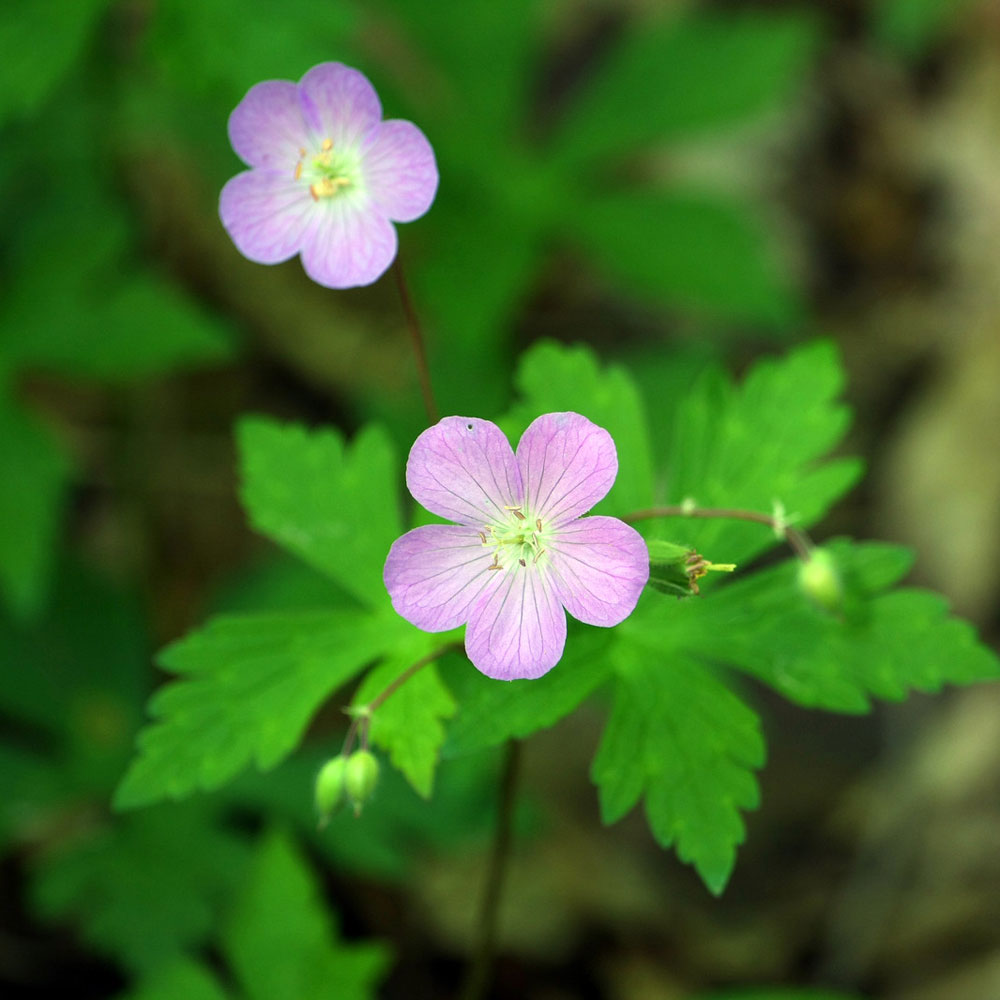
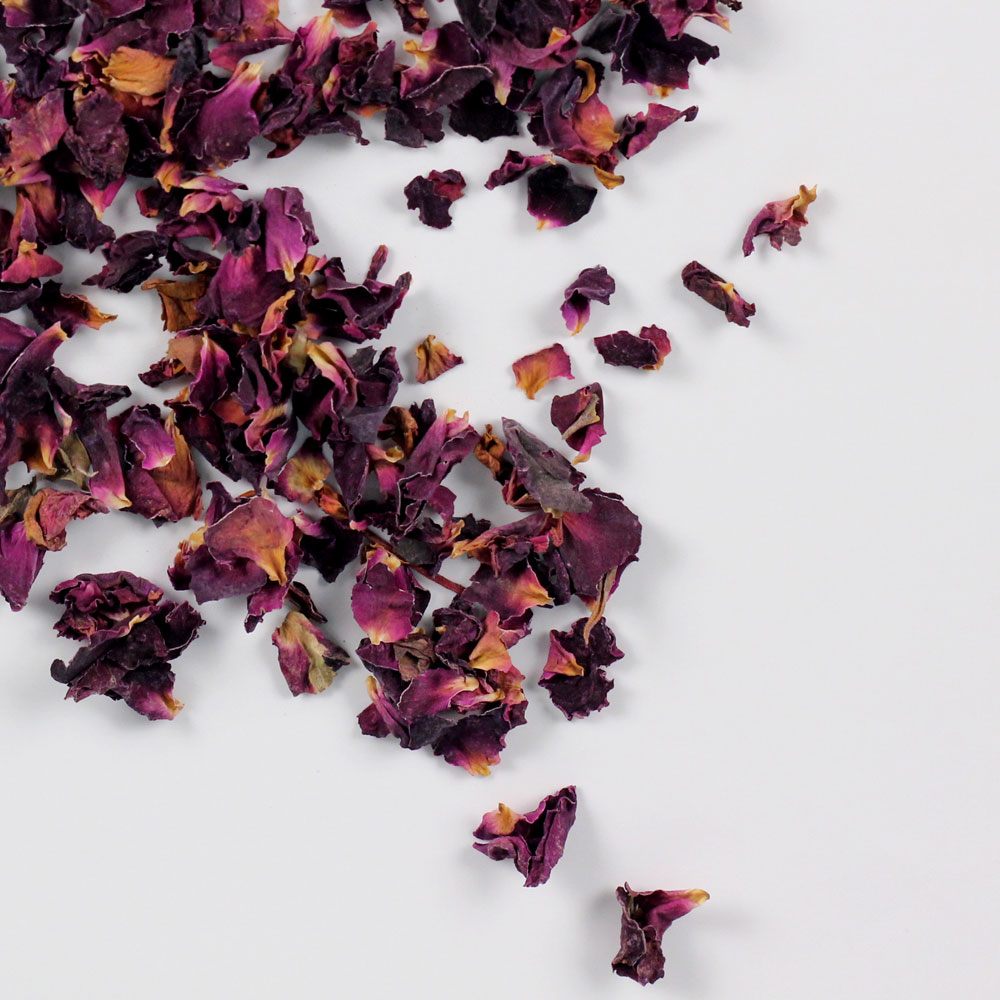


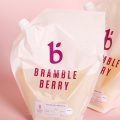
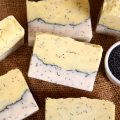
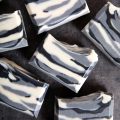
I just made my first kombucha soap, and used this tutorial as a start, but since I typically soap cooler I replaced all water with kombucha, and added a small amount of pureed Scoby at trace. I used your White Tea & Ginger FO (thought I’d go with a “tea” theme, and it smells amazing!) But the batter definitely traced faster than I was expecting, and my ITPS turned into an in the pot plop, but it looks great, and smells divine! I can’t wait to see how it lathers.
Oh, and even with full water replacement I had no overheating issues, just a nice, full gel!
That’s awesome, glad to hear it turned out well. The lather from kombucha is really nice, can’t wait for you to give it a try.
White Tea and Ginger Fragrance Oil: https://www.brambleberry.com/White-Tea-Ginger-Fragrance-Oil-P3964.aspx
Can kombucha tea be added to rebatch soap recipes ? If so , what would the shelf life be since the tea is brewed ?
We wouldn’t recommend kombucha in rebatch. It will shorten the shelf life to about 6 weeks or less, and after that time it can go rancid. Distilled water will wet the soap without affecting the shelf life.
Kelsey,
I would like to make only 1/4 of the recipe.
Please let me know what the ingredients calculation would be.
Thank you. Sincerely, Olga
PS. I tried to divide all ingredients by 4, But, unfortunately by soap did not turn right…
We have a post that shows you how to resize recipes. It has step-by-step instructions and photos to make it easy: https://www.soapqueen.com/bath-and-body-tutorials/tips-and-tricks/how-to-resize-cold-process-soap-recipes/
how many 100g bars roughly would the 5lbs mould make?
The mold holds 5 pounds or about 2267 grams. You can find that conversion by searching “5 pounds in grams” on a search engine like Google. So 2267 divided by 100 will give you about 22 bars.
I make my own kombucha and been using the liquid only to make soap for years. It’s wonderful on the skin. This is a nice variation.
Absolutely, kombucha adds a special touch to handmade soap.
hi! so you use no water and all kombucha?
No, this recipe uses 10.5 oz. of distilled water as well. The blended kombucha SCOBY is added when the water and oils are first combined (step three).
Hello, I have made this soap now, and I was able to cut it after a few hours. When I put the recipe into soapcalc, it said to use only 49.6 g of NaOH, for the same amount of oils as your recipe – but your recipe says to use 210 g of NaOH – now, will I die? 😉 can you maybe explain it to me, why there is so much lye?
With kind regards
I’m not sure why that calculator only calls for 50 grams of lye. You may want to contact them for more information. I can tell you we’ve made and tested this recipe and it feels great on the skin.
Made this recipe last December (2016) and after fully curing several months had used it up. Made 2 more batches this evening with kombucha tea with a bit more sugar and the loaf internal temperature reached 175 or higher. It is the only cold process I’ve ever attempted and even with so many great recipes available to try I think this is a superior bar soap with the lower pH. Thanks for sharing this knowledge with us!
You’re welcome Jean, so glad you’re enjoying this recipe! 🙂
-Kelsey with Bramble Berry
Hello! What superfat, if any, did you use in this recipe. I am converting it to use with my 12-cavity rectangular mold from Bramble Berry, but my soap calculator is not liking the proportions of the oils. Beautiful soap and I have a SCOBY hotel with plenty of SCOBY!
Thank you for the recipe. I made my very first cold process soap about 4 weeks ago with your lovely Tea Tree Charcoal facial soap. I am LOVING it! Again, thank you for the recipes!
Glad you’re loving the facial soap, it’s one of my favorites. This recipe has a superfat of 5% and a 10% water discount to account for the extra liquid added with the SCOBY. Learn more about water discounting here: http://www.soapqueen.com/bath-and-body-tutorials/tips-and-tricks/water-discounting-cold-process-soap-how-why/
-Kelsey with Bramble Berry
Charcoal Facial Soap: https://www.soapqueen.com/bath-and-body-tutorials/charcoal-facial-soap-tutorial/
Hello: can the soap be use to wash my face?
This soap has a lot of gentle olive oil so it should be just fine for the face! That being said, everyone’s skin is different. I would recommend trying the bar on your face to see what you think. You may also want to reduce the amount of fragrance. Right by your nose it can be pretty strong, so lighter is generally better when it comes to facial bars. 🙂
Find a light scent recommendation with our Fragrance Calculator: https://www.brambleberry.com/Pages/Fragrance-Calculator.aspx
-Kelsey with Bramble Berry
Wikipedia:
‘Although it has been claimed to have numerous health benefits, there is no good evidence that drinking kombucha has such effects.[1] By contrast, there are several documented cases of serious adverse effects, including fatalities, related to kombucha drinking, possibly arising from contamination during home preparation.[2][3] Since the mostly unclear benefits of kombucha drinking do not outweigh the known risks, it is not recommended for therapeutic use.[1]’
But bathing in it won’t be a problem I suppose 😄
It is definitely important to brew kombucha safely! If you don’t feel comfortable using home brewed kombucha, you can use store bought. You can also skip the kombucha entirely if you like. Water, milk or other liquids will work well instead. 🙂
-Kelsey with Bramble Berry
This is super interesting. Curious to know how the probiotic properties hold up during the gel phase/heat of making CP… Thoughts?
It’s tough to say if the probiotic properties of the kombucha make it through the saponification process. It is a harsh environment, as the soap goes through several pH changes. I can tell you the lather is really nice from the sugar in the kombucha though! It’s also great for marketing purposes. 🙂
-Kelsey with Bramble Berry
I just made this tonight, and it was my very first cold process soap!! it was pretty easy, just lots of steps,but super fun!! I used the tangerine FO, but almost used the ginger patchouli!! how fun does that sound….. kombucha and patchuli!!:)) can we sub a cheaper oil for the olive? that’s a pricey oil, and I used my whole bottle for this one recipe. thx!!
That’s awesome Maria, glad you had fun making this soap! In place of olive oil, you can use canola or rice bran. Just make sure to run your recipe through the Lye Calculator again after any substitutions. 🙂
Read more about substituting oil here: http://www.soapqueen.com/bath-and-body-tutorials/tips-and-tricks/how-to-substitute-oil-in-cold-process-recipes/
Canola oil: https://www.brambleberry.com/Canola-Oil-High-Oleic-P5548.aspx
Rice bran oil: https://www.brambleberry.com/Rice-Bran-Oil-P4971.aspx
-Kelsey with Bramble Berry
Tangerine Essential Oil: https://www.brambleberry.com/Tangerine-Essential-Oil-P3421.aspx
Ginger Patchouli Fragrance Oil: https://www.brambleberry.com/Ginger-Patchouli-Fragrance-Oil-P6125.aspx
can I make this using a regular meat thermometer? and using a double boiler? I’m really excited to try this, but never made soaps before, except m&p. thank you!!
Hi Maria!
You can use a meat thermometer as long as it’s not made of aluminum. Aluminum can react with the lye and create toxic fumes. Stainless steel works best! You can also use a double boiler or a microwave to melt your oils. 🙂
This recipe is pretty advanced, so I would recommend starting out with a few simpler ones before giving it a try. We have some great recipes that are more simple so you can get a feel for the process. You can find those recipes and soaping tips here: https://www.soapqueen.com/bath-and-body-tutorials/back-to-basic-series-roundup-quiz/
This post has more great tips for beginning soapers: http://www.soapqueen.com/bramble-berry-news/beginning-soaper-resource-roundup/
-Kelsey with Bramble Berry
Hi, I’m super interested in making my own soap and came across this recipe because I love to drink kombucha!
I’m just about to watch your beginner tutorial videos, but I;ve just checked the ingredient list for this soap. I cannot get an access to cocoa butter where I live, can this be omitted and replaced by more coconut oil?
Thanks.
If you don’t have cocoa butter, you can use mango or shea butter! They are a bit softer than cocoa butter but still feel nice in the soap. If you don’t have those, you can increase the coconut oil. Just make sure to run the recipe through the Lye Calculator after any substitutions. 🙂
Lye Calculator: https://www.brambleberry.com/Pages/Lye-Calculator.aspx
Read more about substituting oils in soap here: http://www.soapqueen.com/bath-and-body-tutorials/tips-and-tricks/how-to-substitute-oil-in-cold-process-recipes/
-Kelsey with Bramble Berry
Hi, I’m a new member. I have a question, the rose petals looks red !! Me when I used this, they turn black. How do you do it, you have a ”secret” ?? thank you
Eventually, the rose petals will turn brown. That is normal with natural ingredients like rose petals! If you’re not a fan, you can leave them off. The soap will still look beautiful without them. 🙂
-Kelsey with Bramble Berry
I’ve made soap with kombucha tea but I’ve not tried adding the SCOBY. I have so much excess SCOBY that I’ll definitely try this. I might make the purée and freeze it and then add the cubes as 50% of the water, after dissolving the lye in the water, to minimise the scorching. Thanks for the food for thought (no pun intended!).
That sounds like an awesome idea Lisa! Let us know how the soap turns out. 🙂
-Kelsey with Bramble Berry
Oh how funny! Last night I was telling myself I need to toss all the extra SCOBY from the hotels since I’ve given away as many as I can. I have three SCOBY hotels going. Two for Kombucha and one for JUN. This morning I wake up and wonder if the culture could be used in soap. I log onto Bramble Berry to order some EOs and what do I see on the landing page but Kombucha Soap! Great minds……
Oh wow, perfect timing! I love when that happens. Let us know how the soap turns out Sheree! It feels really nice on the skin. 🙂
-Kelsey with Bramble Berry
Yay!!! Finally a use for all my scobies! Thanks, I’ll let you know how it turns out!
You’re welcome Christie! Can’t wait to hear how the soap turns out. 🙂
-Kelsey with Bramble Berry
I have been drinking the tea from the store and have always wanted to make it. The closest place I have found to get the scoby is off of Amazon…yeah they have it all. Haha!
I do like the idea of this and it gives me more reason to start making my own. I can just see it in a wave right now. Did you not color it to see the results of the natural process??? It would be lovely colored with some Tumeric and Paprika.
Kombucha soap would be a great addition to your collection Kristie! We have experimented with color and kombucha. We did add indigo powder and the soap turned a grayish green color. So, you can definitely add color but it may change a bit with the kombucha. A small test batch would be really helpful! 🙂
-Kelsey with Bramble Berry
Indigo powder: https://www.brambleberry.com/Natural-Indigo-Powder-P5727.aspx
Hi Kelsey…. I am brand new to soap making… I am in the process of beginning my first batch… and what better to do it than with my many scobys…. I have about 30 of them at the moment… Don’t buy from Amazon, I will send you 2 for just the price of shipping. I will be buying supplies from you so can just make arrangements later. Just need a physical address I live in North Carolina have been doing Kombucha pretty steady for 3.5 years. Usually do 7 to 10 gallons a week, have many flavors… this recipe I think I will do a second ferment with rose petals for 3 or 4 days then blend all together in my Vita Mix… should be interesting!!!!!… OH I am excited!!!!
That’s awesome, sounds like you have plenty of SCOBYs to soap with! Have fun giving this recipe a try. I think you’ll really love the way it feels. If you have any questions before getting started let us know. We’re happy to help. 🙂
This post has some great information about soaping as well, including four how-to videos: http://www.soapqueen.com/bramble-berry-news/beginning-soaper-resource-roundup/
-Kelsey with Bramble Berry
I’m excited to try this! How was the end fragrance? Is there any vinegar scent remaining in the final bar? I’m thinking of going with a different scent so I’m trying to see if I need to factor the vinegar into my decision.
Hi Faith!
I do not smell any vinegary smell in the final bar. It smells wonderfully floral! This may vary slightly depending on how “strong” your kombucha is. So glad you’re going to give this recipe a try!
-Amanda with Bramble Berry
This recipe also worked for HP! I used the burnt sugar fragrance oil in lieu of the geranium and, oh my, this is a delicious, creamy soap! Thanks for the wonderful idea!
That is awesome! If you have a picture of the soap we’d love to see it on our Facebook page. 🙂
Bramble Berry Facebook: https://www.facebook.com/BrambleBerry/
-Kelsey with Bramble Berry
Burnt Sugar Fragrance Oil: https://www.brambleberry.com/Burnt-Sugar-Fragrance-Oil-P5903.aspx
I wish I had thought of this when I was a master kombucha brewer! when I finally move I will so try this. The soap looks so rich and creamy!
Have fun giving this recipe a try Amanda! The great thing is the soap feels as creamy as it looks. 🙂
-Kelsey with Bramble Berry
Where do you buy Kombucha?????
Hi Diane!
You may be able to find it at your local grocery store! Mine has it near the premade salad mixes and fruit smoothies. You may also be able to find it at a health food store or your local co-op. 🙂
-Kelsey with Bramble Berry
Thank you Kelsey, Love you folks at Bramble Berry. Your a peach
You’re welcome Diane! Thanks for your super sweet comment. 🙂
-Kelsey with Bramble Berry
Have successfully made numerous batches of raw kombucha soap, using everywhere from straight booch to a 50/50 dilution with rainwater. If you soap using super-chilled booch and at room temperature you will not have problems with heat circles, cracking, overheating, rapid temperature increases, or batch acceleration. Soaping at 86 degrees, I was able to mix, separate into smaller amounts to add color, swirl, then pour into loaves, and then set it in the cabinet to do its thing. The end results are incredible (wish I could post pictures here to show) … and the beneficial properties of the booch pass through to the finished product.
=) Caryn
Thanks for sharing your awesome tips Caryn! We’ll definitely have to give those a try in our next batch. 🙂
Also, if you have Facebook we’d love to see the pictures! You can share those here: https://www.facebook.com/BrambleBerry/
-Kelsey with Bramble Berry
how do you know the beneficial properties of the scoby pass on to the soap? I am willing to try it because I have tons of komboucha and extra scobies, but I don’t want to waste my time or mess up the ph of my soap
Hi Miriam!
It’s tough to say if the beneficial properties of the SCOBY make it through the saponification process. It is a harsh environment, as the soap goes through several pH changes. I can tell you the lather is really nice from the sugar in the kombucha though! It’s also great for marketing purposes. 🙂
-Kelsey with Bramble Berry
My soap recipe has been tested by the same lab that Michael Roussin used for his Kombucha research in 1995. The lab determined that the active ingredients in Kombucha (glucuronic acid, B vitamins, etc) remain intact, passing along those benefits to you.
That’s awesome Caryn! Thank you so much for sharing. It’s great to know the benefits make it through the process. 🙂
-Kelsey with Bramble berry
Thanks for the tutorial! I have been using Kombucha vinegar for my hair rinse after shampooing and love it! It seems to give my hair a bit more nourishment & softening. I add some EO drops to scent it. 1/3 Kombucha vinegar to 2/3 water.
I want to try making my next Shampoo bar with some of the Scoby slurry to see how it works. Thanks so much for the info on blending it ~ I can’t wait to try it!
You’re welcome Eva! The vinegar sounds awesome. How does it leave the hair feeling? 🙂
-Kelsey with Bramble Berry
Vingear acts as a natural softener.
I didn’t believe it until i tried it myself. I have straight & fine hair below my shoulders. If I don’t use my vinegar rinse my hair doesn’t brush out nearly as easily. I shampoo with my homemade bar as normal, rinse with water, and apply my vinegar ‘conditioner’ rinse with a spray bottle. I usually only add just a splash of cool water after. My hair comb easily when wet. Then when dry, my hair feels silky, smells great from the EOs, and is super shiney!
The Kombucha vinegar seems even more softening, and my hair feels stronger, & has more volumn. I shared some with a friend that said her hair is softer too. ; )
That’s awesome, I’ll have to give it a try! 🙂
-Kelsey with Bramble Berry
This is rather interesting! I’ve been making kombucha for about 5 months. Absolutely love the drink. My thoughts on all the extra scobies have been for fertilizer in my spring planting. But…..putting them in a bar of soap would be great! Scobies & Kombucha do not like heat much over 85 when brewing…I learned the hard way on that one. I killed it all the first time around. So I’m thinking that soaping at room temperature and not allowing it to heat up and gel may make it very benifical to your skin in the finished product. Ive read about using kombucha and scobies to make a mask (which I have not tried yet), but I’m not closed to the idea! Thx for this post! I think I’ll save some scobies for a few bars of soap!
You’re welcome Val! If you give it a try in soap let us know how it turns out. It’s really fun to make. 🙂
-Kelsey with Bramble Berry
No WAY! I make my own KT and last month I mentioned to some like-minded friends, as we were talking about our multiplying SCOBYs, “Hmmm…I wonder if I could use them to make soap.”
I am SO doing it! 😉
Thanks for the push!
Oh perfect timing! Have fun giving it a try in soap Lisa. Let us know how it goes! 🙂
-Kelsey with Bramble Berry
Great recipe! …..how do you stop the dried rose petals from going brown and oozing? Ive never had much luck with dried rose petals on top of CP soap, they always go a disgusting brown and end up soggy. Thanks.
Thanks so much Maya, glad you like the recipe!
With rose petals, eventually they will turn brown. That’s normal for natural ingredients like rose petals and lavender buds. If you’re not a fan of that brown color, you can definitely leave it off! You could leave the top as is, or sprinkle some glitter or mica on top with a powder duster. Any one of those would look really pretty. 🙂
Micas: https://www.brambleberry.com/Micas-C46.aspx
Iridescent glitter: https://www.brambleberry.com/Iridescent-Glitter-P3976.aspx
Powder duster: https://www.brambleberry.com/Powder-Duster-P5427.aspx
-Kelsey with Bramble Berry
TIP…..DO NOT SPRAY BOTANICALS WITH ALCHOHOL. THIS IS WHAT CAUSES BROWN RINGS TO FORM AROUND THE BOTANICAL. DO THE TEST AND SEE THE BEAUTIFUL RESULTS.
Oh that’s interesting! If you like you can skip the alcohol. This post has more tips for preventing soda ash: http://www.soapqueen.com/bath-and-body-tutorials/tips-and-tricks/explaining-and-preventing-soda-ash/
-Kelsey with Bramble Berry
I have been making Kombucha, Water Kefir, Milk Kefir and Ferments since January and love them. What a wonderful idea for the extra scoby babies, thanks! I wonder if using probiotic
water kefir would add anything to the soap. Hmmmmm…… 🙂
You’re welcome Majorie! The kefir water sounds like a super interesting experiment. If you give it a try let us know how it goes. 🙂
-Kelsey with Bramble Berry
I make all of our soap and fermented foods, including kombucha so this recipe makes me very happy! Thank you for this post!
You’re welcome Janette! I hope you get a chance to give this recipe a try. 🙂
-Kelsey with Bramble Berry
cold process soap is NEVER pH8 it’s impossible, get a professional instrument to take your pH correctly and stop misleading people!
Hi Mary!
Normal soap pH is around 9-10! However, the kombucha naturally has vinegar. That vinegar can neutralize some of the lye, which is the reason for the slightly lower pH level. Sorry for any confusion!
You can also lower the pH of soap using citric acid. That makes the soap a bit more gentle and perfect for hair. We used citric acid to lower the pH to 7 in this Sudsy Shampoo Bars Tutorial: https://www.soapqueen.com/bath-and-body-tutorials/cold-process-soap/sudsy-shampoo-bars/
When testing the soap, we love to use pH strips. We find that gives us an accurate reading! You can find those here: https://www.brambleberry.com/pH-Strips-1-pack-of-50-P4434.aspx
-Kelsey with Bramble Berry
I’d just like to say your customer service is amazing. You always make people feel welcome and at ease to ask any questions they have which is one of the reasons I continue to return to your website. Your team team has taught me more about looking after my own customers than the customer service course I completed, please keep up the good work 😀
Thank you so much Helen! We really appreciate this message. It means a lot to us and I can’t wait to share it with the office. Thanks for being a customer. 🙂
-Kelsey with Bramble Berry
Hi,
You say the kombucha has a vinegar taste. If the pH is low, will parts of the kombucha then not bind to your lye, neutralizing the lye partly and add to your superfatting level that way?
It is actually a thing I was thinking about for a while now since I read about adding low pH liquids to soap before but never asked. I created a goat’s buttermilk soap a while ago which had rings (like you write in this blogpost) and it made me think about what actually happened in that soap.
With kind regards,
Annemieke
Hi Annemieke!
Because of the vinegar in the kombucha, we were wondering how it would affect the pH! When we tested it, it was about 8. That’s just slightly lower than the normal 9-10 range. If you’re using kombucha, you can lower the superfat a little to adjust! 🙂
-Kelsey with Bramble Berry
I LOVE kombucha and your soap is beautiful! Thank you for the information!!!
Thank you so much Claudia! Glad to hear you like the soap. 🙂
-Kelsey with Bramble Berry
I don’t understand how can 10% of 18.15 be 0.9? Shouldn’t the discount be 1.815?
The soap looks great. I’ve never tried kombucha, and I usually love fermented foods, but something about that drink and scoby just grosses me out. 🙂
Subtracting 10% means 90% remains. Multiplying by 0.9 gives you 90% of the original, resulting in the 16.3 (rounded).
Hi Martina!
Terran is correct (thank you!) The .9 amount is 90%, which is the remainder of the liquid. That means you don’t have to subtract the 1.815 amount from the water – one fewer step! 🙂
-Kelsey with Bramble Berry
OK, I have to be honest and say this may not be a recipe for me, but it reminds me of one of my FAVORITE recipes for replacing water with another liquid. Most of the soap I make is cold process, but I also love making hot process and my favorite is to use very strong black coffee to replace 100% of the water. Adding lye to the strong coffee makes it smell really bad, but when you cook it for hot process, the bad smell completely leaves and you have a beautiful dark chocolate brown soap. I premake embeds of various colors (usually yellow and blue), cut them into uneven shapes and add them to the hot process soap just prior to molding it and it makes a fantastic, gorgeous bar of soap. I don’t know what happens to the horrible smell, but it really does disappear when the soap cools and hardens and it doesn’t make a brown lather either. I love it. Moral of the story, don’t be afraid to replace water with another liquid. If it doesn’t make good soap, use it in the laundry, to wash the car or even to wash dishes. If it saponofies, it doesn’t have to go to waste. Have fun!!
That sounds amazing! I absolutely love coffee soap. I agree, the lye and coffee mixture doesn’t smell the best but it does go away. I love the rich brown color it gives the soap. Great suggestion James! 🙂
-Kelsey with Bramble Berry
I brew my own Kombucha at home. I have been thinking making Kombucha soap these day. It’s like you guys read my mind. Thank you for sharing the recipe and step-by-step tutorial. Will definitely give this a whirl.
Oh that’s awesome, perfect timing! Let us know how it turns out Olivia. 🙂
-Kelsey with Bramble Berry
I love the idea of Kombucha soap, though I’ve only had the drink one time. Do you think the lye/temperature would destroy the probiotic and enzymes? what if you made a normal base and then added the Kombucha as an additive later?
Hi Nicola!
It’s tough to say if the properties of the kombucha will make it through the saponification process. The pH changes can be quite harsh! I can tell you the sugar in the kombucha creates a really nice lather though. It’s also great for marketing. Kombucha fans will love it! 🙂
For adding the kombucha later, are you wanting to rebatch it with the soap? We haven’t given that a try, so I’m not entirely sure how it would work! We have added tea to rebatch though. I would recommend a small test batch to see how it works!
See the Green Tea Rebatch Tutorial here: https://www.soapqueen.com/bath-and-body-tutorials/cold-process-soap/green-tea-rebatch-teabatch/
-Kelsey with Bramble Berry
I love how you explain the water discount, thank you! I think your finished product is lovely, and I’ll bet the geranium oil lends a nice aroma. Thanks for sharing!
You’re welcome Stacie! So glad you like the post. Thanks for your sweet comment. 🙂
-Kelsey with Bramble Berry
I lived for a year in South Korea and personally I find kimchi to be revolting in the extreme…. ew! And believe me – people who eat it can’t mask the smell on their breath. I’ve heard of this kombacha before, but only is so far as people making themselves deathly ill by not doing it right and poisoning themselves. You health nuts go right ahead, I gotta pass this one right up.
Not sure how people become “deathly ill” from kombucha unless they let it mold, but it ranges from slightly tart sweet tea to vinegar.
The taste of kombucha can be a bit polarizing. I like the taste of it, and we were excited to try something new! The good news is if you’re not a fan of kombucha, you can skip it in this recipe. That’s what makes soapmaking so fun – you can add whatever ingredients you like. 🙂
-Kelsey with Bramble Berry